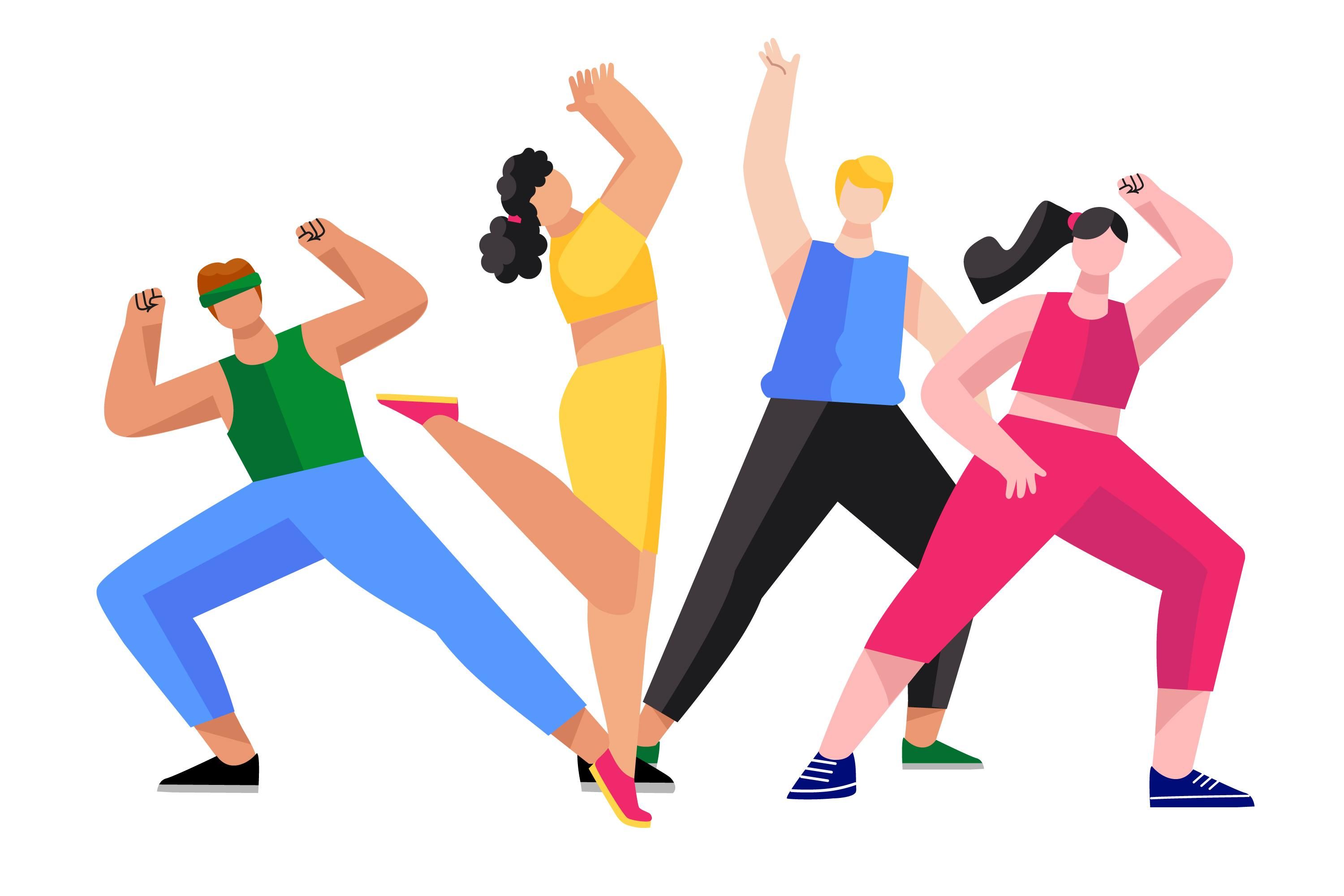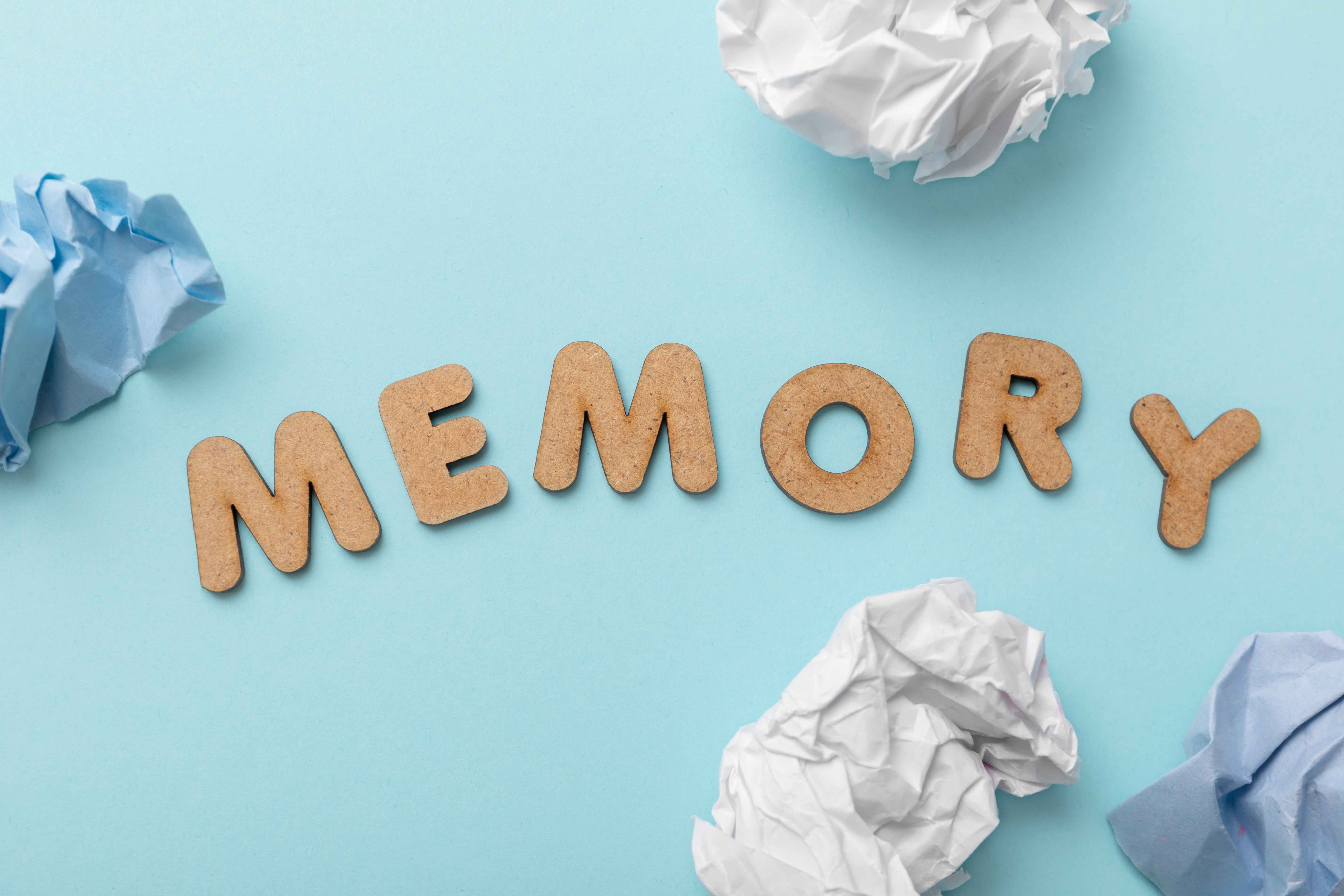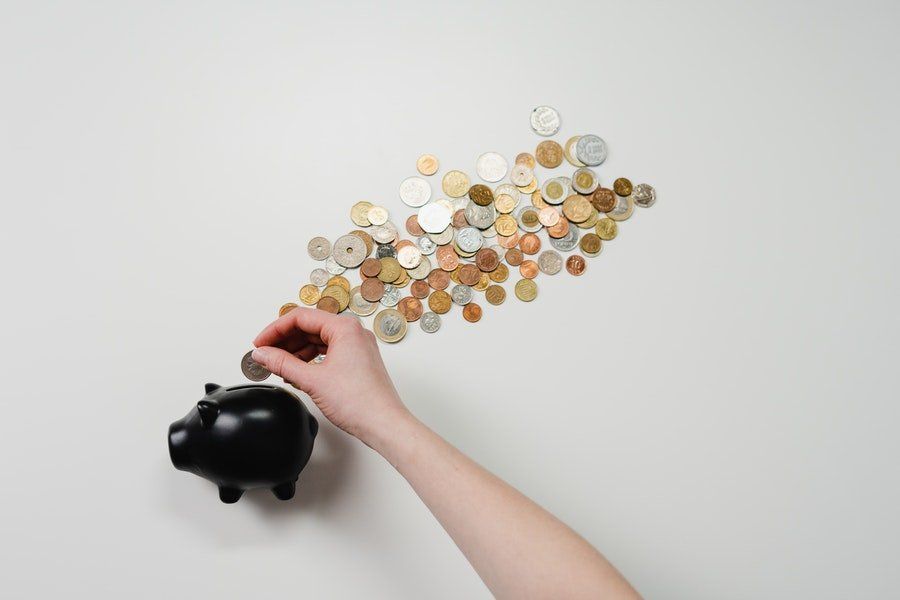Exercise and Movement for Health, Wellness, and Great Work

Vector image is from freepik.com by @freepik
There are three key drivers of our health and wellness: good nutrition, exercise, and sleep.
They may seem simple and obvious, but that doesn’t mean we’ve got them covered. In this article, we focus on exercise for health and wellness. (We cover nutrition and sleep in separate articles.)
The Problem of Not Enough Exercise
Many people struggle with not getting enough exercise—and with too much sitting and sedentary behaviour. Adults between age 20 and 75 (from a sample of more than 2,600) reported spending an average of 9.5 hours of sedentary time each day, not including sleep.
It’s been said that “sitting is the new smoking” because of its serious adverse health effects. Our bodies were made to move, and they pay a price when we don’t. When we’re sedentary, there’s a dramatic drop in the production of enzymes that burn fat (a drop of as much as 90%) and our metabolism slows.
Sitting is the new smoking…. Sitting is more dangerous than smoking, kills more people than HIV, and is more treacherous than parachuting. -Dr. James Levine, professor of medicine, Mayo Clinic
Excess sitting is associated with a shorter life span. According to Dr. Michael Greger in his book, How Not to Die, “men who sit for six hours or more per day have a 20% higher overall death rate compared to men who sit for 3 hours or less, while women who sit for more than 6 hours have a 40% higher death rate.”
…exercising for 30 to 60 minutes does not come close to making up for the damage done by sitting…. We are built for motion. -Jonathan Fields, How to Live a Good Life
24 Benefits of Exercise
Exercise comes with an incredible array of benefits. For example, it has positive effects on:
- management of anxiety and depression
- appearance
- balance and coordination
- blood pressure
- bone health and strength
- brain health and cognitive capacity and function, including concentration, focus, learning speed, mental stamina, memory, and mitigating cognitive decline
- body weight (both preventing excessive weight gain and maintaining healthy weight levels, which is important for blood pressure and cholesterol as well as lower risk of heart disease and diabetes)
- chronic condition management (e.g., arthritis, diabetes)
- confidence
- creativity
- disease prevention (including the flu, pneumonia, covid-19, Type 2 diabetes, metabolic syndrome, stroke, and cancers such as bladder, breast, colon, endometrium, oesophagus, kidney, lung, stomach)
- energy
- happiness
- immune system function
- longevity
- mental health and wellness
- mood
- motivation
- muscles and strength
- relaxation
- sex drive and sexual function (including enhanced arousal for women and fewer problems with erectile dysfunction for men)
- sleep (including quality, latency, and depth)
- stamina
- stress management
Exercise improves our ability to do daily activities, and it helps us avoid falls—a leading cause of injury and deaths, especially among older people. According to the U.S. Centres for Disease Control and Prevention, more than one out of four Americans aged 65 or older falls each year. Falls are the leading cause of injuries (both fatal and nonfatal) among older adults. Exercise helps lower the risk of premature death from all causes, according to the research.
Because it stimulates brain chemicals, exercise leaves us feeling happier, more relaxed, and less anxious. Also, it delivers oxygen and nutrients to our tissues and helps our cardiovascular system work more effectively.
If we want to live good lives, we need to move our bodies. Nearly every marker of vitality—from reduced risk of heart disease, cancer, and diabetes to enhanced brain function, elevated mood, better ability to deal with stress, reduced anxiety and depression, and amped cognitive and physical abilities—is made better by exercise. Exercise is powerful medicine. -Jonathan Fields, How to Live a Good Life
Exercise, Productivity, and Work
How does exercise affect our work capacity? According to a Leeds Metropolitan University study of the effects of daytime exercise among more than 200 office workers who had access to a company gym, workers—on days when they exercised at the gym—reported managing their time more effectively, being more productive, having better interactions with colleagues, and feeling more satisfied at the end of the day.*
Equally telling, when we don’t exercise, we get tired more easily and lose energy and stamina. We get stressed, irritable, and more forgetful and impulsive.
Importantly, exercise is also a “keystone habit” with multiple spillover benefits in other areas, from mood and mental health to confidence, nutrition, and productivity.
Typically, people who exercise start eating better and becoming more productive at work. They smoke less and show more patience with colleagues and family. They use their credit cards less frequently and say they feel less stressed. Exercise is a keystone habit that triggers widespread change. -Charles Duhigg, The Power of Habit
Read: Weave Health And Wellness Into Your Company's Culture
Why Exercise Is Hard for So Many
Though we know exercise is good for us, that doesn’t mean we’ll do it—or stick with it. When we were children, most of us moved a lot naturally. Exercise came naturally through play and curiosity.
That often changes as we grow older. Why? Many reasons. We tell ourselves we’re too busy to exercise. We say we’re too tired, or we don’t feel like it. Perhaps the weather isn’t quite right (too hot, or too cold, or wet or humid). Perhaps we think of ourselves as lazy.
In some cases, we’ve had bad childhood experiences with exercise. Maybe we felt self-conscious in gym class at school. Or we were embarrassed in sports—or felt guilt about letting our teammates down. Maybe we were hurt by overly critical parents, coaches, or physical education teachers.
Some have pain, injuries, or disabilities that make exercise harder. Others view it as punishment or something to be endured instead of something fun.
Many of us nowadays feel time-starved. We’ve allowed our days to get so packed with meetings, activities, deadlines, and deliverables that we’ve cheated ourselves of the health and energy needed to allow those to continue effectively. It’s a recipe for stress, resentment, and burnout.
Instead of viewing exercise as something we do for ourselves—a personal indulgence that takes us away from our work—it’s time we started considering physical activity as part of the work itself. The alternative, which involves processing information more slowly, forgetting more often, and getting easily frustrated, makes us less effective at our jobs and harder to get along with for our colleagues. -Ron Friedman, “Regular Exercise Is Part of Your Job,” Harvard Business Review, October 3, 2014
There are also biological and evolutionary factors at work. According to Harvard evolutionary biologist Daniel Lieberman, we humans are hard-wired by evolution to tend toward inactivity. When food was scarce, going for a workout was maladaptive because it wastes precious energy. By resting as much as possible, our ancestors would wisely conserve their energy for when they really needed it. In today’s world of material abundance for so many, people have to override those ancient instincts to conserve energy.
Discover: Work Isn't Worth A Heart Attack
Top Strategies for Getting Enough Exercise
So how should we go about it? Here are top strategies for exercise and movement:
Start small and keep it simple. Exercise doesn’t need to be complicated. We don’t necessarily need workout clothes, equipment, or a gym membership. Walk more. Take the stairs. Park at the back of lot. Get off the bus a stop early. Walk or bike to work or school, if possible.
Some physical activity is better than doing none.-World Health Organization
Make exercise and regular movement as easy as possible. Keep those running or walking shoes by the bed. Have that gym bag packed and ready to go. Eliminate barriers and excuses.
Choose activities we enjoy. A little fun factor goes a long way. We tend to feel more confident and perform better when we enjoy what we’re doing. Incorporate play or a challenge into exercise, making it fun again, with novelty and change. Use the principles of “flow”: ensure there’s a clear set of goals, immediate feedback on our progress toward goals, and a good balance between perceived challenges and our skills (so things aren’t too difficult or too easy). Facilitate exercise through enjoyable hobbies that require some movement (e.g., gardening).
Find powerful and sustainable motivation to drive our exercise. Connect our exercise to a deeper why and our higher aspirations and life goals—ones that have emotional resonance for us. Keep those higher aims front and centre in our minds. Examples:
- “I exercise and stay healthy so I can feel great when I work on my new business.”
- “I work out so I can be alive and energetic with my kids (or grandkids).”
Create habit loops for exercise so we stop thinking about it and just do it automatically. In his book, The Power of Habit, investigative reporter Charles Duhigg notes that we create more effective and lasting habits when they have a three-step loop:
- Cue: a trigger that tells our brain to go into automatic mode—and which habit to use.
- Routine: a physical, mental, or emotional practice that becomes standard.
- Reward: a psychological or emotional payoff that helps our brain decide that this habit loop is worth remembering and repeating.
Duhigg writes, “The cue, in addition to triggering a routine, must also trigger a craving for the reward to come.” He provides an example:
Want to exercise more? Choose a cue, such as going to the gym as soon as you wake up, and a reward, such as a smoothie after each workout. Then think about that smoothie, or about the endorphin rush you’ll feel. Allow yourself to anticipate the reward. Eventually, that craving will make it easier to push through the gym doors every day. -Charles Duhigg, The Power of Habit
Set challenging but realistic goals. Too many people don’t have any goals or set unrealistic goals and end up quitting out of frustration when they fall short. Good goals help us with focus, motivation, and commitment—especially when we keep them visible and top of mind. Write them down, display them, and talk about them.
Set milestones to shoot for and celebrate on the way to achieving goals. This will help us avoid the problem of insufficient or fading motivation from goals that are distant. Examples: 500 more steps walked per day on average vs. last month, or celebrating each pound lost on the way to a target weight.
Use implementation intentions. These are concrete plans to follow through on our goals. They come in a specific form: “I will (BEHAVIOUR) at (TIME) in (PLACE).” Example: “I will exercise for 40 minutes at noon on weekdays at my local gym.” In his book, Atomic Habits, James Clear cites research from the British Journal of Health Psychology on 248 people and their exercise habits. Researchers placed the people into three groups:
- the control group (asked only to track how often they exercised)
- the “motivation” group (asked to track their workouts and to read and hear from the researchers about the benefits of exercise, e.g., improved heart health)
- the “plan” group (who received the same presentation as the second group but were also asked to devise a plan for when and where they would exercise: “During the next week, I will partake in at least 20 minutes of vigorous exercise on [DAY] at [TIME] in [PLACE].”)
The results were surprising: a much higher percentage of people in the third group exercised at least once a week (91% vs. 38% and 35%). See the chart below.
Find out what works for you and do more of that. There’s no need to try everything. Start with one or two simple approaches that seem promising and see what works and what doesn’t. Don’t expect perfection and risk getting frustrated.
Replace bad habits with good ones. For example, go without devices for an evening and focus on walking or moving instead. This comes with a double benefit of building momentum while reducing harm.
Build in social and group components to exercise. Join a team or enlist a workout buddy, trainer, accountability partner, or hiking hive. Note that there are different types of “social.” In one type, we’re doing things individually but in the presence of others (e.g., at a yoga class). In another type, we’re working together as a group on things (e.g., doubles tennis or pickleball, or a sports team). The latter can be more effective in instilling routine and accountability because it involves more mutual dependence.**
We tie physical activity to community. I think that has ancient and deep roots…. The most effective exercise programs are ones that are social and communal and it’s always been that way. People for millions of years went out [hunting and gathering] in groups. -Daniel Lieberman, expert in human evolutionary biology
10 More Tips for Exercise and Movement
Here are 10 more things we can do to ensure we’re moving and exercising more
- Walk more, including a brisk walk daily***
- Use a step counter or other technology to track our progress
- Calendarise exercise to help instil regularity and accountability
- Build movement into regular microbreaks
- Engage in both cardio and strength training
- Get out into nature and get some sunlight (e.g., try “forest bathing”)****
- Build in enough recovery time to avoid injury and ensure our exercise is sustainable
- Drink enough water and ensure proper hydration
- Don’t exercise too close to bedtime, as it may give us too much energy and make it harder to fall asleep
- Give ourselves grace and avoid harmful self-judgment
How to Make It Stick
How to ensure we keep exercising and don’t give up? A New Mexico State University study of 266 people looked into not why people exercised but why they continued to do so regularly.***** The reason, in a nutshell, was the reward they began to crave. The majority of people in one group continued exercising because they felt good after doing so (with the endorphins and other neurochemicals generated by exercise), and they grew to expect and crave that feeling. The majority in another group reported that they continued exercising because it gave them a sense of accomplishment, and they craved the positive feeling they got when they tracked their performance.
In the end, one of the most powerful things we can do is change our mindset about exercise and movement. Not everyone has the gift of health and movement. Too often, we take it for granted. Better to view movement as a privilege, not a chore—and something we can invest in so we have the ability to do all the other important things in our lives.
Wishing you well with it!
This article was also published on Gregg Vanourek's LinkedIn.
Edited by: Kiran Tuljaram
Personal
Tags: Wellness
References:
* Coulson, J.C. & McKenna, Jim & Field, M.. (2008). Exercising at work and self-reported work performance. International Journal of Workplace Health Management.
** Finlay, Krystina & Trafimow, David & Villarreal, Aimee. (2006). Predicting Exercise and Health Behavioral Intentions: Attitudes, Subjective Norms, and Other Behavioral Determinants. Journal of Applied Social Psychology.
*** According to Dr. Michael Greger in How Not to Die, “Walking 300 minutes/week (about 40 min./day) drops overall mortality by 14%.” Try walking meetings. They get us moving instead of sitting and they can also make the meeting more collaborative and enjoyable, with added benefits of fresh air and sunshine.
**** Forest bathing (shinrin-yoku) was started in Japan in the 1980s. According to the research, it can help us manage stress and anxiety, improve our circulatory health and resilience, and generate an enhanced immune response.
***** In his book, The Power of Habit, Charles Duhigg points to fascinating research conducted by a social scientist and a mathematician to help the YMCA figure out what got people to keep working out at their facilities. Emotional factors were big drivers of retention. An example: whether YMCA employees knew members’ names and greeted people when they walked in. “People,” Duhigg writes, “often go to the gym looking for a human connection, not a treadmill.”
Gregg Vanourek is an executive, changemaker, and award-winning author who trains, teaches, and speaks on leadership, entrepreneurship, and life and work design. He runs Gregg Vanourek LLC, a training venture focused on leading self, leading others, and leading change. Gregg is co-author of three books, including Triple Crown Leadership (a winner of the International Book Awards) and LIFE Entrepreneurs (a manifesto for integrating our life and work with purpose and passion).







